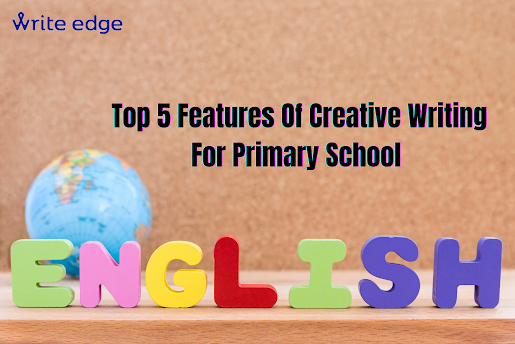Top 5 Features Of Creative Writing For Primary School
Moreover, to describe such writings, they need to know how to make a well-structured narrative. It will help the kids to make the readers understand what it is written about. For this, the kids need to learn the basic features of creative writing for primary school which we are describing in this article.
# 1.Character
A character is the one about whom the story is all about and who helps to drive the story forward. It can be anyone, a person, animal, place, or thing, which depends on the narrative you are writing about. Additionally, they say the dialogues and portray the actions.
For example, you have to compose an essay on a favorite creature. The animal will be the character about whom you will write the whole story. On the other hand, if kids have to write about themselves, they are the main character.
Besides this, sometimes, there are many characters in the story. Make sure to portray the leading person very perfectly so that the readers can understand the storyline till the end.
Moreover, the students can also take the online or home creative writing tuition to enhance their writing skills.
# 2.Plot
The plot is a series of events that takes place from the start till the end. It makes up the entire story as it brings forward the characters and background of the story.
In addition, the plot of the story is very important so that the readers can understand what it is all about. For example, students have to write an essay on a fictional story. Moreover, with a well-structured plot, a story can be written properly and recognized as it is actual. It can be an interesting drama scene that can be portrayed dramatically.
Moreover, all narratives have a start, middle, and end part. Initiate from the introduction of a character of the story. In addition, tell about the location where the scene is going on and the time when it is happening.
In the middle part of the story, tell about the conflicts, turning points. Furthermore, complete the story with the solution at last. Thus, with a strong plot, you can form the structure of a story and make the readers understand it very well.
In addition, to improve the writing skills, students can attend the primary creative writing class online. The courses are highly-effective and definitely help to learn the different aspects of writing.
# 3.Setting
A setting of a story is when and where a particular incident takes place. For example, students have to write an essay on the school trip they went on last month. Begin with the date, time, and the place from where the journey started.
In addition, narrate how much fun you have during the journey. It will make the reader clear about every important thing you enjoyed on the trip.
In the middle of the essay, write the day and time you reached the location. Furthermore, tell about the activities and the places you went. End the story with the date and time you came back to the home.
Thus, the setting is as important as a character because it engages the readers in the story.
# 4.Point Of View
Point of view is that perspective that makes the reader understand the sentiments a character experiences in a story. You can write in three forms.
First Person- Actually, in this form, the one who is telling the story is the main character. For example, for diary writing or writing about yourself, you will write using "I" or "my".
Second Person: In this form, the narrator speaks to the reader using "you," "your," and "yours". For instance, in instructive writing like How to get ready for school, How to maintain discipline in a classroom, etc.
Third Person: In this form, the one who tells the story is not part of it. For example, for academic writings such as essays or compositions, use the "he", "she", "they", "them", and "it".
# 5.Writing Styles
Students can use different writing styles for describing distinct types of narratives.
Narrative Writing Style: This type of writing is used to tell the story. You can write essays, short stories, plays, etc.
Even if what you described really occurred or not, this style describes the stories in a way that the readers will understand clearly and enjoy. The goal should be to tell the stories in a compelling way. Moreover, create the characters and describe the location and time of the story such that it looks realistic.
Descriptive Writing Style: This style of writing describes the person or place in such a way that it creates a realistic picture in the readers' minds. For example, poems, dairy writings, comics, travel writings, etc. It makes the reader fully engaged in what is happening.
Additionally, with the descriptive writing style, you can make the readers use their senses and feel they are part of what is being written.
Expository Writing Style: This style of writing describes, or informs the readers about some topics. You can use this technique to tell the clear information people need to know. For instance, textbooks, newspapers, educational articles, etc.
# Conclusion
Every kid should build a practice of creative writing from a young age. It will help them to learn new words and make their vocabulary clear.
Additionally, practicing creative writing will make their mind sharp and creative. Consequently, it will make you fluent in the language.




Comments
Post a Comment